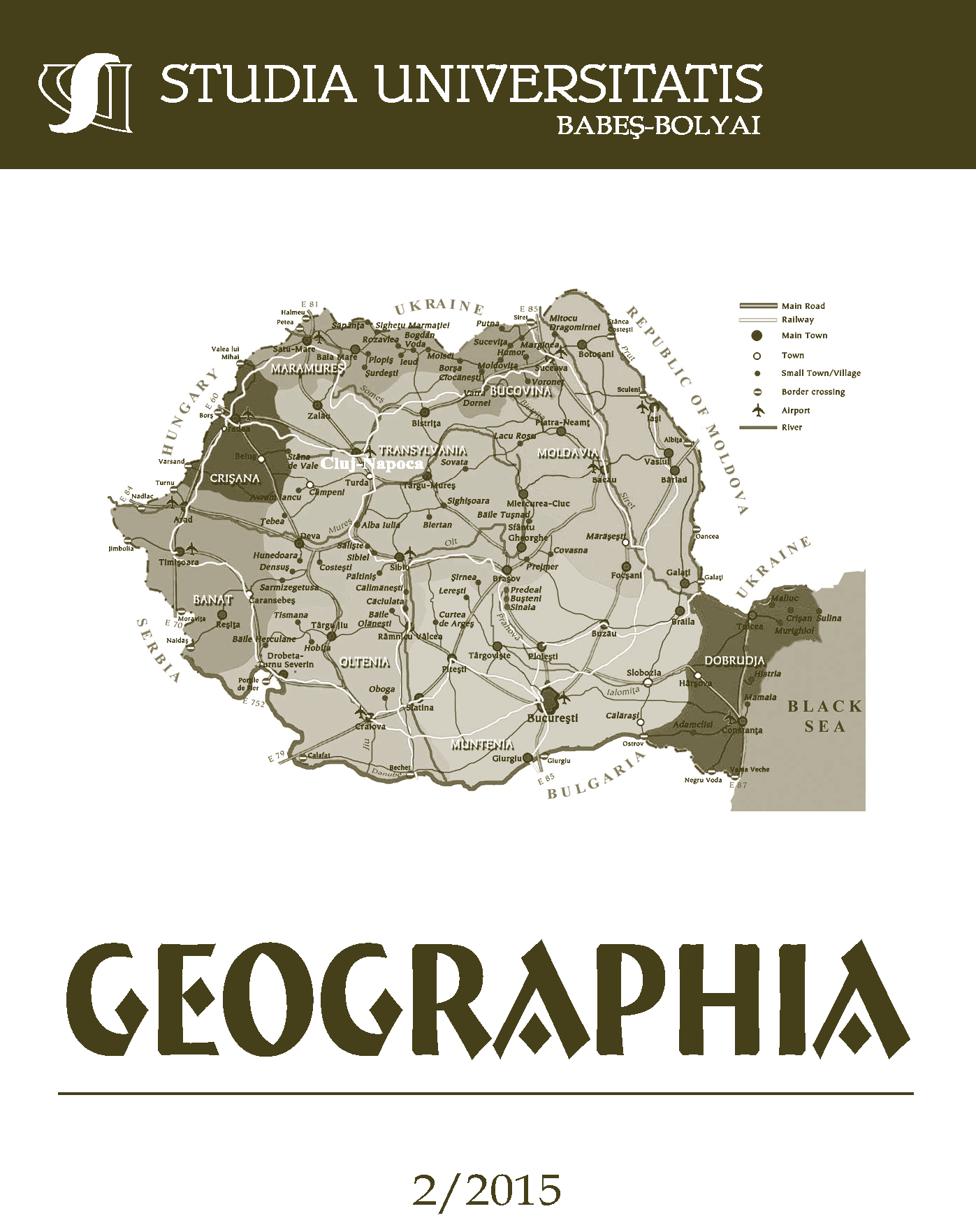DEBRIS FLOW ACTIVITY RECONSTRUCTION USING DENDROGEOMORPHOLOGICAL METHODS. STUDY CASE (PIULE IORGOVANU MOUNTAINS)
Keywords:
debris flow, dendrogeomorphology, growth anomalies, Piule Iorgovanu Mts.Abstract
Debris Flow Activity Reconstruction Using Dendrogeomorphological Methods. Study Case (Piule Iorgovanu Mountains). Debris flows are one of the most destructive mass-movements that manifest in the mountainous regions around the world. As they usually occur on the steep slopes of the mountain streams where human settlements are scarce, they are hardly monitored. But when they do interact with built-up areas or transportation corridors they cause enormous damages and even casualties. The rise of human pressure in the hazardous regions has led to an increase in the severity of the negative consequences related to debris flows. Consequently, a complete database for hazard assessment of the areas which show evidence of debris flow activity is needed. Because of the lack of archival records knowledge about their frequency remains poor. One of the most precise methods used in the reconstruction of past debris flow activity are dendrogeomorphological methods. Using growth anomalies of the affected trees, a valuable event chronology can be obtained. Therefore, it is the purpose of this study to reconstruct debris flow activity on a small catchment located on the northern slope of Piule Iorgovanu Mountains. The trees growing near the channel of transport and on the debris fan, exhibit different types of disturbances. A number of 98 increment cores, 19 cross-sections and 1 semi-transversal cross-section was used. Based on the growth anomalies identified in the samples there were reconstructed a number of 19 events spanning a period of almost a century.
References
Alestalo, J. (1971), Dendrochronological interpretation of geomorphic processes, Fennia 105, Helsinky.
Armanini, A., Fraccarollo, L., Larcher, M. (2005), Debris Flow, Encyclopedia of Hydrological Sciences, 142, Trento.
Bălteanu, D., Cheval, S., Șerban Mihaela (2004), Evaluarea și cartografierea hazardelor natural și tehnologice la nivel local și național. Studii de caz, Fenomene și procese cu risc major la scară națională, Editura Academiei Române, București, pp. 398-402.
Chiroiu, P. (2015), Studiu dendrogeomorfologic asupra proceselor de versant din partea central nordică a munților Făgăraș, PHD Thesis, West University, Timișoara.
Costa, J.E. and Jarett, R.D. (1981), Debris flows in small mountain stream channels of Colorado and their hydrologic implications, Bulletin of the Association of Engineering Geologists, vol. 18, pp: 309-322.
Hungr, O. (1995), A model for the runout analysis of rapid flow slide, debris flows and avalanches. Canadian Geotechnical Journal, 32, pp: 610-623.
Ilinca, V. (2009), Estimating of debris flow velocity and discharge. Case study: two debris flows from Lotru Valley (in Romania), Abstract vol., pp. 14, 25th National Symposium of Geomorphology, Arcalia.
Ilinca, V. (2014), Characteristics of debris flows from the lower part of the Lotru River basin (South Carpathians, Romania), Landslides, vol. 11, pp: 505-512.
Pop, O., Popa, I., Surdeanu, V. (2008), Dendrogeomorphological analysis of human-induced debris flows in the Călimani Mountains (Romania), Book of Abs., pp. 80, IAG Regional Conference on Geomorphology, Brașov.
Pop, O., Surdeanu, V., Irimuș, I.A., Guitton, M. (2010), Distribution spatial des coulées de debris contemporainedans les massif du Călimani (Roumanie), Studia UBB Geographia, vol. LV -1, pp: 33-44.
Schweingruber, F.H. (2007), Wood structure and environment, Springer-Verlag, Berlin.
Schweingruber, F.H. (1996), Tree rings and environment dendroecology, Swiss Federal Institute for Forest, Snow and Landscape Research, Wien.
Shroder, J.F. (1980), Dendrogeomorphology: review and new techniques of tree-ring dating, Progress in Physical Geography, vol. IV - 2.
Stoffel, M., Bollschweiler Michelle (2009), What trees can tell about earth-surface processes: teaching the principles of dendromorphology, Geography Compass 3, pp: 1013-1037, Switzerland.
Stoffel, M., Bollschweiler, Michelle (2008), Tree ring analysis in natural hazards research - an overview, Natural Hazards and Earth System Sciences, 8, Fribourg.
Strunk, H. (1997), Dating of geomorphological processes using dendrogeomorphological methods, Catena 31, pp: 137-151.
Takahashi, T. (1991), Debris flows, A.A. Balkema, Rotterdam.
Takahashi, T. (2007), Debris flow mechanism, prediction and countermeasures, Taylor and Francis, London, UK.
Văidean Roxana și Petrea, D. (2014), Dendrogeomorphological reconstruction of past debris flow activity along a forested torrent (Retezat Mountains), Revista de Geomorfologie, vol. 16, pp: 17-24.
Văidean Roxana, Hognogi, G. (2015), Damages assessment associated to the flood event which occurred on 11-14 July 1999 in the Râul Mare basin, Air and Water Components of the Environment Conference volume, Edit. Presa Universitară Clujeană, DOI: 10.17378/AWC2015_64.
Downloads
Published
How to Cite
Issue
Section
License
Copyright (c) 2015 Studia Universitatis Babeș-Bolyai Geographia

This work is licensed under a Creative Commons Attribution-NonCommercial-NoDerivatives 4.0 International License.





 ©Studia Universitatis Babeş-Bolyai Geographia. Published by Babeș-Bolyai University.
©Studia Universitatis Babeş-Bolyai Geographia. Published by Babeș-Bolyai University.